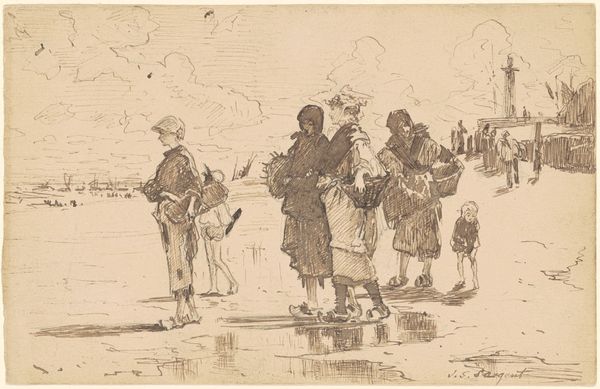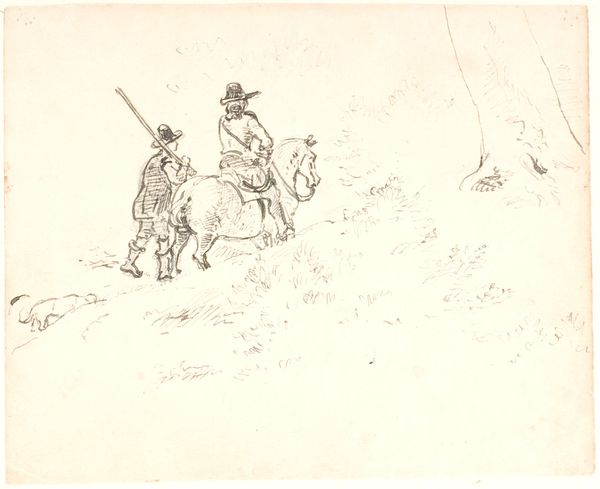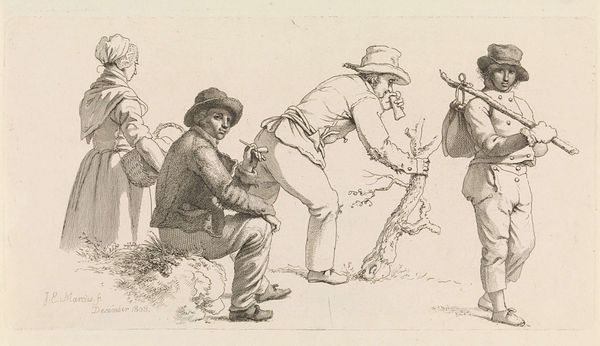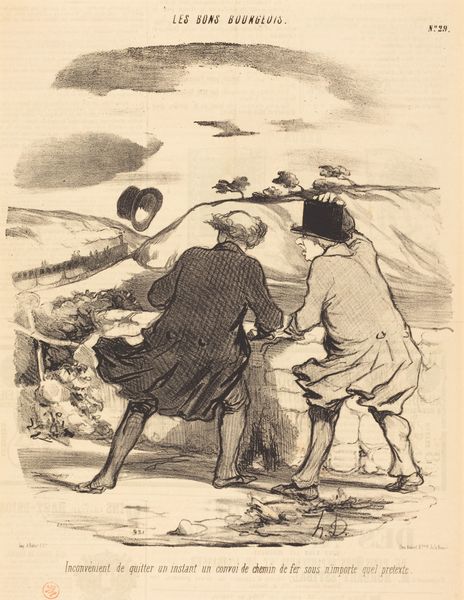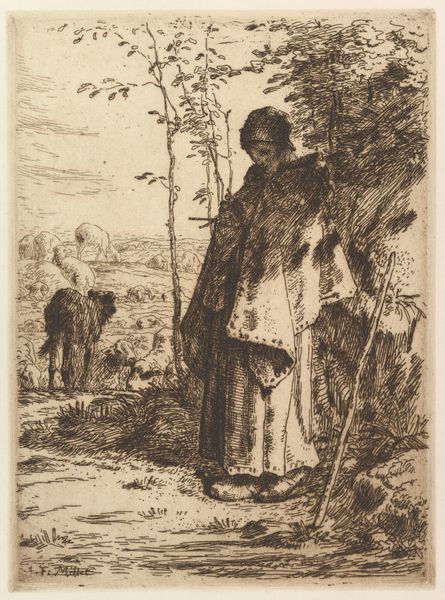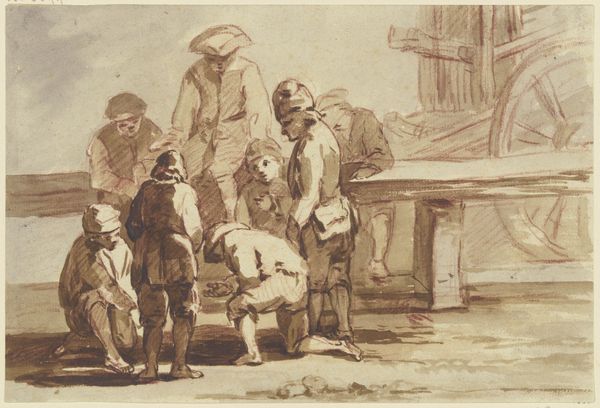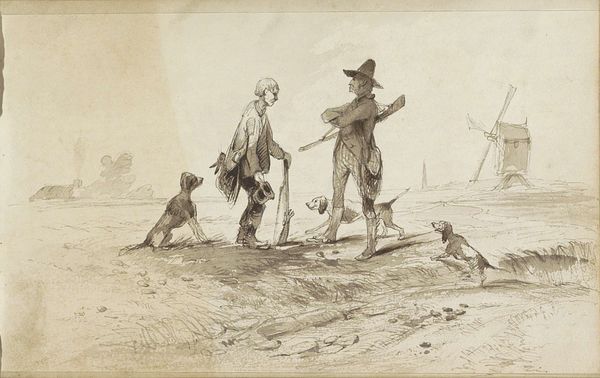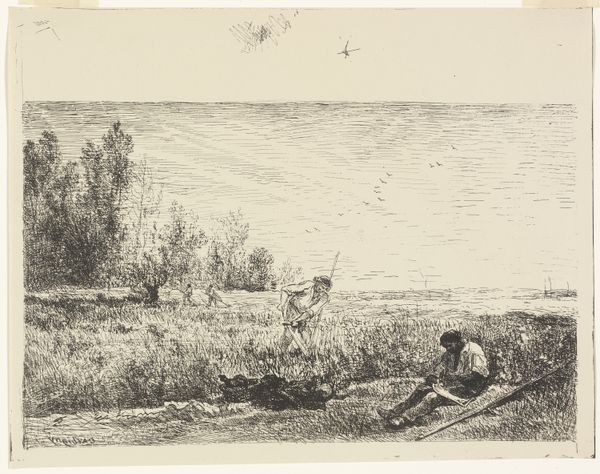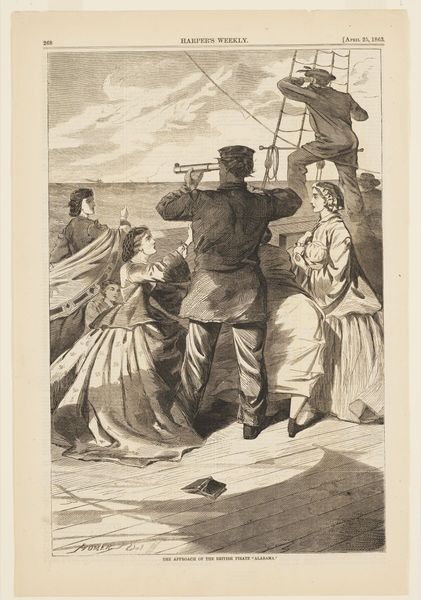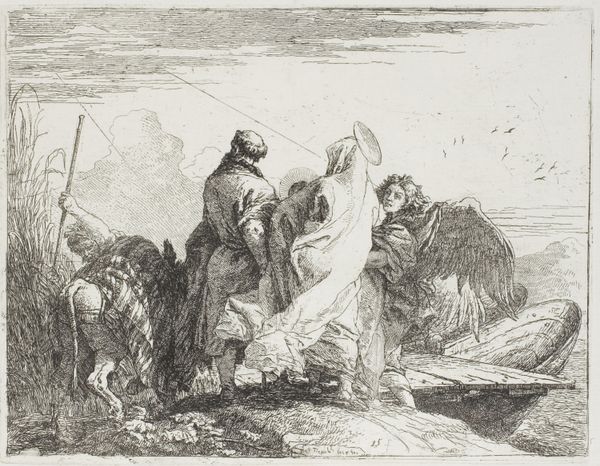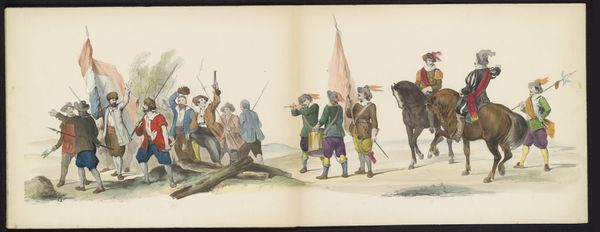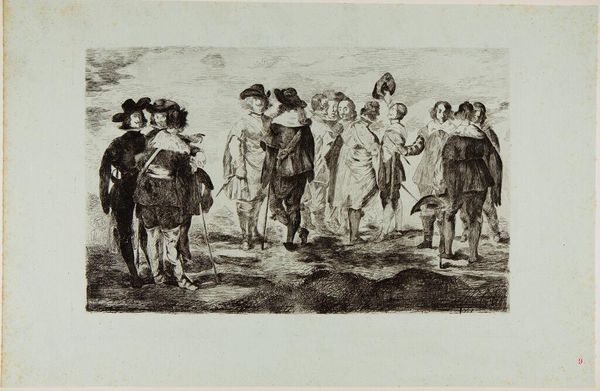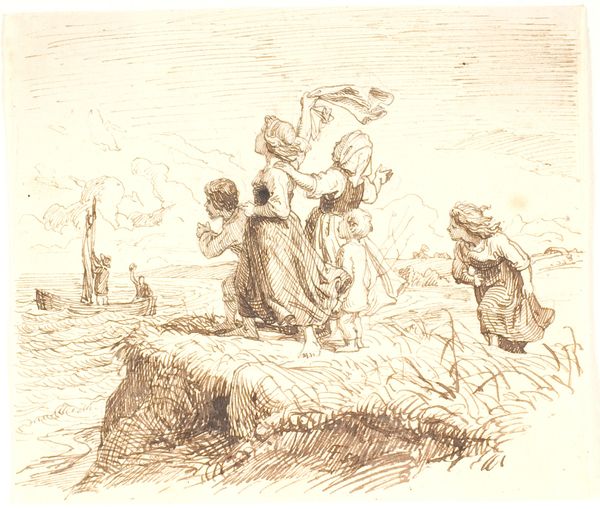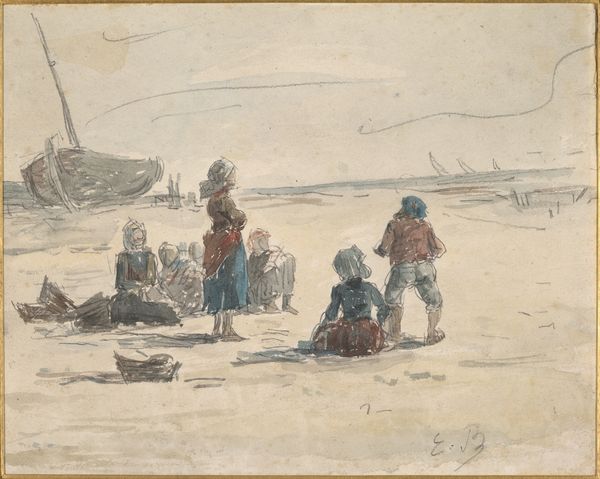
painting, plein-air, watercolor
#
figurative
#
painting
#
impressionism
#
plein-air
#
landscape
#
figuration
#
watercolor
#
coloured pencil
#
watercolor
Copyright: Public Domain: Artvee
Winslow Homer painted this watercolor, "Berry Pickers," in July of 1873, most likely in the state of Maine. The painting depicts a group of children, mostly girls, picking berries in a field near the coast. In the post-Civil War era, American artists frequently turned to scenes of rural life, imbuing them with a sense of nostalgia for a simpler past. Homer, however, was never one for sentimentality. While he captures the charm of childhood, there's also a sense of labor and industry in the work. These children are not simply playing; they are contributing to the household economy. Consider the details: the plainness of their clothes, the seriousness of their expressions, and the way they are dispersed across the landscape, each focused on their task. Homer's choice of watercolor, a medium often associated with amateur art and leisure, is also significant. He elevates it to a medium for serious social observation. To fully understand this painting, one would want to research the economic conditions of rural communities in the late 19th century. How did child labor contribute to family survival? How did artists like Homer negotiate the changing roles of childhood in a rapidly industrializing nation? These are just some of the questions a historian brings to the interpretation of art.
Comments
No comments
Be the first to comment and join the conversation on the ultimate creative platform.
